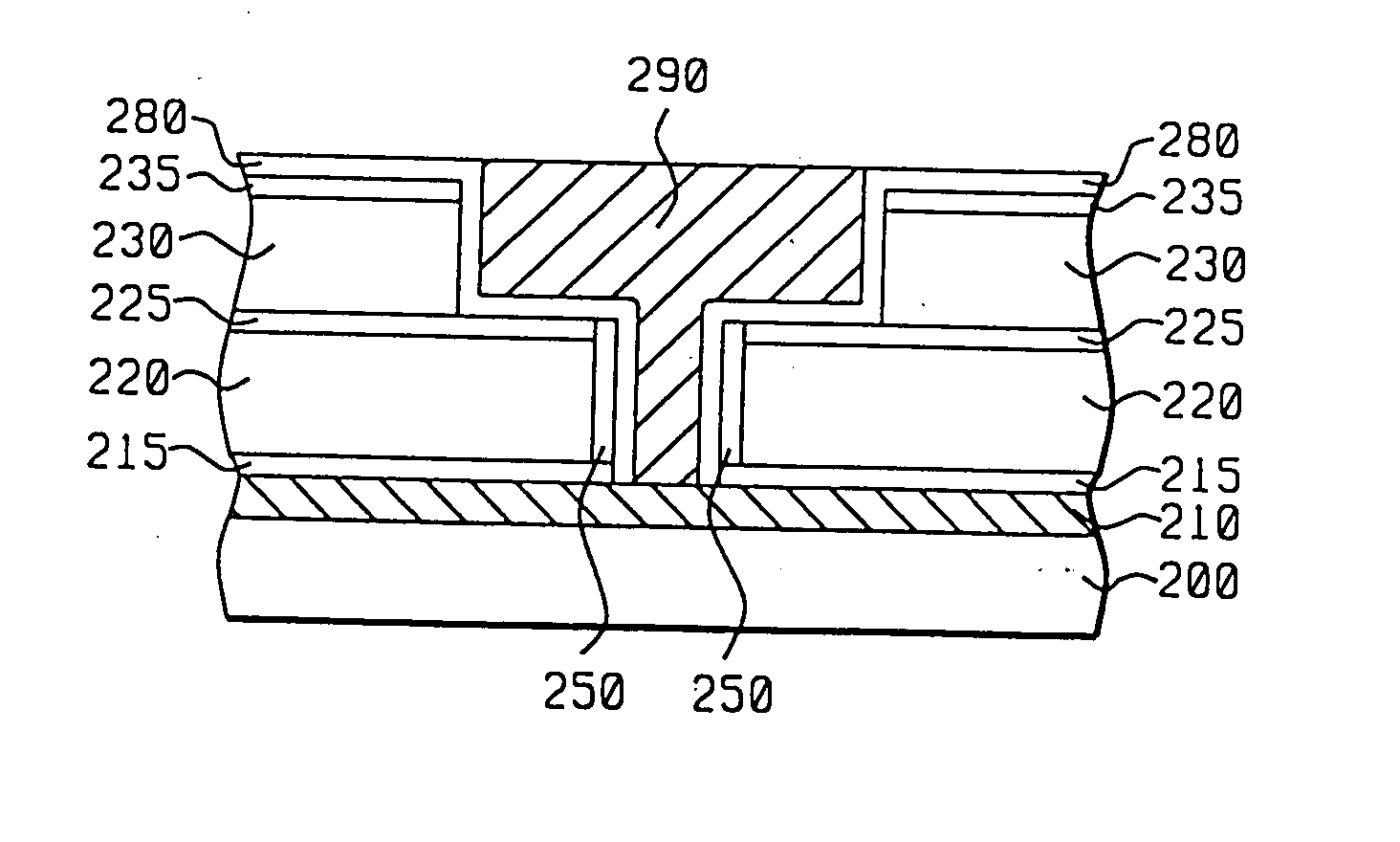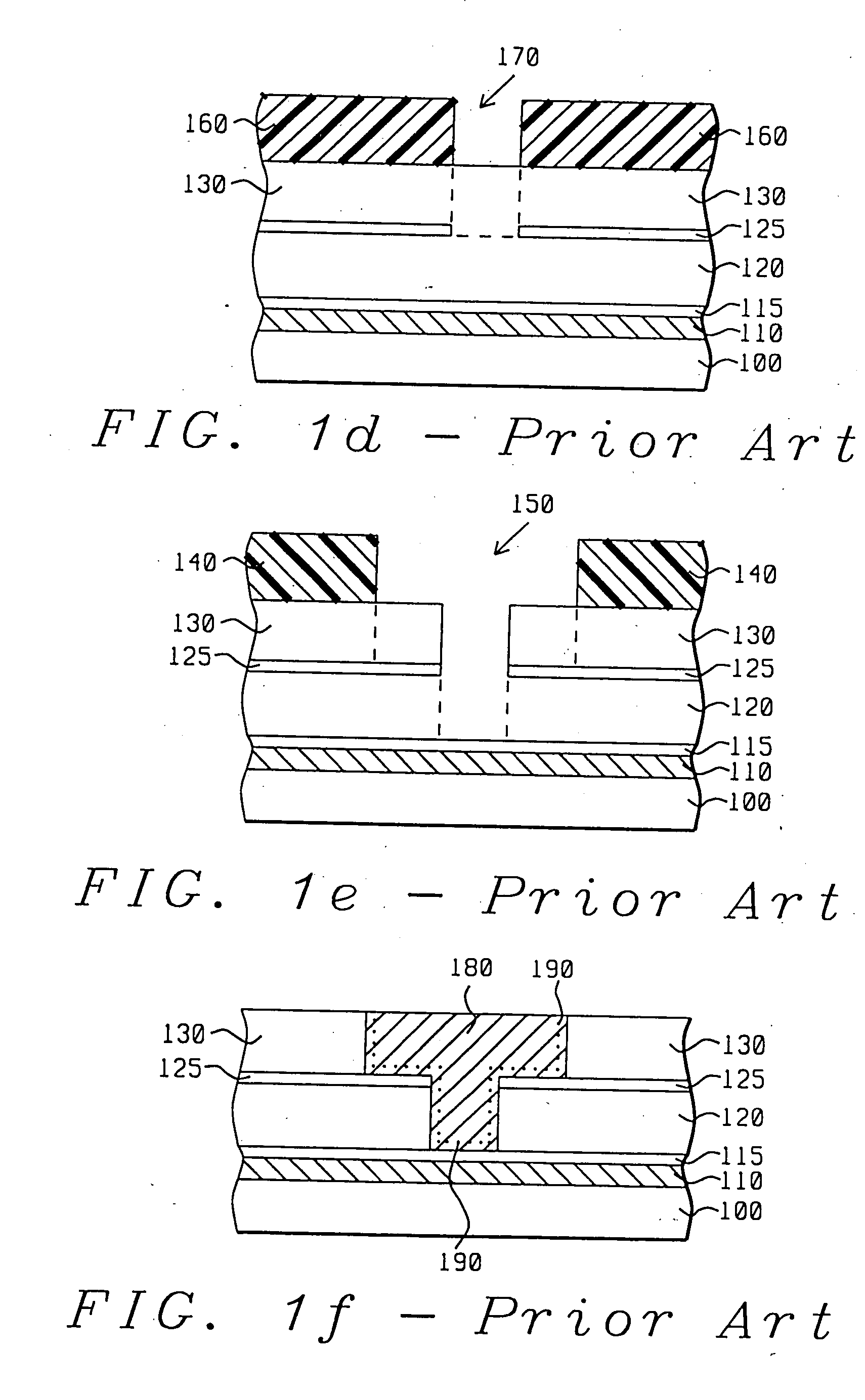Method to solve via poisoning for porous low-k dielectric
a low-k dielectric and porous technology, applied in the field of methods, can solve the problems of poisoning of vias, interconnects or vias, poor interfaces between contact conductors, etc., and achieve the effect of preventing outgassing
- Summary
- Abstract
- Description
- Claims
- Application Information
AI Technical Summary
Benefits of technology
Problems solved by technology
Method used
Image
Examples
Embodiment Construction
[0033] Referring now the drawings, FIGS. 2a-2i, there is shown a method of reducing via poison in low-k Cu dual damascene structures through a protective layer that is formed. It will be apparent to those skilled in the art that the disclosed method will be especially suitable for porous low-k dielectric materials in which a single via or a dual damascene structure is formed. This is because, the protective layer that is disclosed prevents any outgassing from the porous low-k dielectric layer that may have harbored moisture and impurities during the earlier various process steps, and any detrimental effects thereof during the subsequent steps of depositing metal in the single or the dual damascene structure.
[0034] Specifically, FIG. 2a shows a portion of a semiconductor substrate (200), which is preferably silicon.
[0035] In FIG. 2a, the substrate is provided with first metal layer (210) and a passivation layer (215). Metal is preferably copper with a thickness between about 1000 t...
PUM
| Property | Measurement | Unit |
|---|---|---|
| dielectric constants | aaaaa | aaaaa |
| temperature | aaaaa | aaaaa |
| dielectric constant | aaaaa | aaaaa |
Abstract
Description
Claims
Application Information
 Login to View More
Login to View More - R&D
- Intellectual Property
- Life Sciences
- Materials
- Tech Scout
- Unparalleled Data Quality
- Higher Quality Content
- 60% Fewer Hallucinations
Browse by: Latest US Patents, China's latest patents, Technical Efficacy Thesaurus, Application Domain, Technology Topic, Popular Technical Reports.
© 2025 PatSnap. All rights reserved.Legal|Privacy policy|Modern Slavery Act Transparency Statement|Sitemap|About US| Contact US: help@patsnap.com



